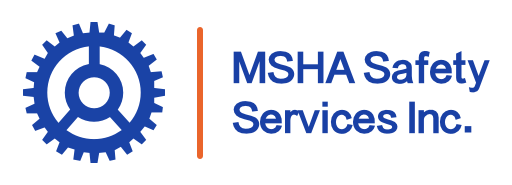Unexpected visits from the Mine Safety and Health Administration (MSHA) can cause anxiety for mine operators and workers. These surprise inspections are meant to ensure compliance with federal safety standards and help protect workers from the risks associated with mining. By understanding the MSHA inspection process, you can feel more confident and prepared for any unannounced visits.
What Triggers an Unexpected Visit from MSHA?
There are several reasons why MSHA might conduct an unannounced inspection, including:
- Accident Reports: If a mine reports a workplace accident, MSHA may conduct an inspection to assess safety protocols, identify hazards, and ensure corrective measures are in place.
- Employee Complaints: MSHA takes complaints from employees seriously. If an employee raises concerns about unsafe practices or working conditions, MSHA may perform a surprise inspection.
- Routine Inspections: MSHA mandates regular inspections, especially in higher-risk mining operations. While these inspections are usually scheduled, some may be unannounced to ensure compliance.
- Hazardous Conditions Reports: If MSHA receives information about specific hazardous conditions at a site, they may conduct an unexpected inspection.
Understanding these triggers can help operators stay vigilant and prepared.
What Should I Do if MSHA Arrives Unexpectedly?
If an MSHA inspector arrives without prior notice, stay calm and follow these steps:
- Verify Credentials: Always verify the inspector’s identity by checking their official MSHA credentials.
- Notify Management: Immediately inform the management team so they can be present during the inspection.
- Review Site Protocols: Ensure all site personnel are aware of inspection protocols, including safe zones and equipment handling.
By staying organized, you’ll demonstrate a proactive approach to compliance, which can make the inspection process smoother.
What Rights Do I Have During an MSHA Inspection?
As a mine operator or worker, you have certain rights during an MSHA inspection:
- Accompaniment: You have the right to accompany the inspector throughout the inspection process. This allows you to address any questions and clarify procedures.
- Due Process: You have the right to understand the inspection’s findings and receive a clear explanation of any issues raised.
- Privacy: Employees may speak privately with inspectors to discuss safety concerns without fear of retaliation.
Knowing your rights can help you participate more effectively in the inspection process.
What Documentation Should I Have Ready for MSHA Inspectors?
Being prepared with the right documentation helps streamline the inspection process, but it’s also important to understand what happens if MSHA issues citations during the visit. MSHA inspectors will want to review certain records and documentation, including:
- Training Records: Proof of safety and training programs for all employees.
- Equipment Maintenance Logs: Documentation of regular maintenance and safety checks for all equipment.
- Incident Reports: A record of any workplace accidents, near misses, and corrective actions taken.
- Compliance Documentation: Records that show adherence to MSHA’s safety standards.
Having these documents readily accessible can streamline the inspection and prevent delays.
What Are the Consequences of Non-Compliance Identified During an Inspection?
Non-compliance during an MSHA inspection can have serious consequences, such as:
- Monetary Fines: MSHA may issue fines based on the severity of the violations.
- Increased Inspections: Mines with repeated violations may face more frequent inspections, adding operational disruptions.
- Operational Suspensions: In severe cases, MSHA has the authority to halt operations until compliance is restored.
Understanding the potential impact of non-compliance highlights the importance of maintaining a safe and compliant work environment.
Can MSHA Issue Citations During an Unexpected Visit?
Yes, MSHA inspectors have the authority to issue citations if they identify safety violations. Common violations might include:
- Inadequate Safety Training: If employees are not adequately trained in safety protocols.
- Faulty Equipment: If equipment is found to be in poor condition and poses a safety risk.
- Poor Ventilation: Especially in underground mines, improper ventilation can lead to citations due to health risks.
These citations typically come with a timeline for corrective action, and operators must address issues promptly to avoid further penalties.
What Happens After an Inspection Is Completed?
Once an inspection is complete, MSHA provides a report outlining any findings, including violations and recommendations. Here’s what happens next:
- Corrective Actions: You’ll need to address any violations within the specified timeframe.
- Follow-Up Inspections: MSHA may return for a follow-up inspection to verify compliance with corrective actions.
- Documentation: Retain all inspection reports and records of corrective actions as proof of compliance.
By responding promptly and effectively, you can reduce the likelihood of further citations.
Can I Appeal a Citation Issued by MSHA?
Yes, if you believe a citation was issued unfairly, you have the right to appeal. The appeal process involves:
- Submitting a Formal Request: File an appeal through MSHA’s formal review process.
- Hearing and Evidence Submission: You may present evidence to support your appeal, including documentation or witness statements.
- Review Decision: After reviewing all information, MSHA will issue a final decision on the citation.
The appeals process can help operators address and potentially reverse unwarranted citations.
How Can I Find Out More About MSHA’s Inspection Process?
To learn more about the MSHA inspection process, consider the following resources:
- MSHA Website: The official MSHA website offers comprehensive information on compliance, inspection procedures, and training resources.
- Training Programs: Enroll in MSHA-certified training programs to better understand inspection criteria and prepare for potential audits.
- Industry Associations: Organizations such as the National Mining Association provide valuable resources and guidance on maintaining compliance.
These resources can be invaluable in staying informed and prepared.

How Can I Prepare for a Potential Unexpected Visit from MSHA?
Preparation is essential for managing unexpected MSHA inspections. Here’s how to get ready:
- Conduct Internal Audits: Regularly audit your own operations to identify and address potential compliance issues.
- Implement Safety Training Programs: Ensure all employees receive regular training on safety protocols.
- Maintain Up-to-Date Documentation: Keep all safety and compliance records current and accessible. This includes records for independent contractors working on your mine site.
- Encourage a Culture of Safety: Promote safety as a core value, encouraging employees to follow best practices at all times.
Proactive preparation minimizes risks and demonstrates your commitment to safety and compliance.
Navigating MSHA Inspections with Confidence and Compliance
An unexpected visit from MSHA doesn’t have to be a source of stress. By understanding what triggers inspections, knowing your rights, and taking steps to prepare for unannounced visits, you can approach these inspections with confidence. Prioritizing compliance and safety benefits not only your employees but also the long-term success of your operation. Remember, a well-prepared team and a proactive approach to safety make all the difference in navigating the MSHA audit process.

